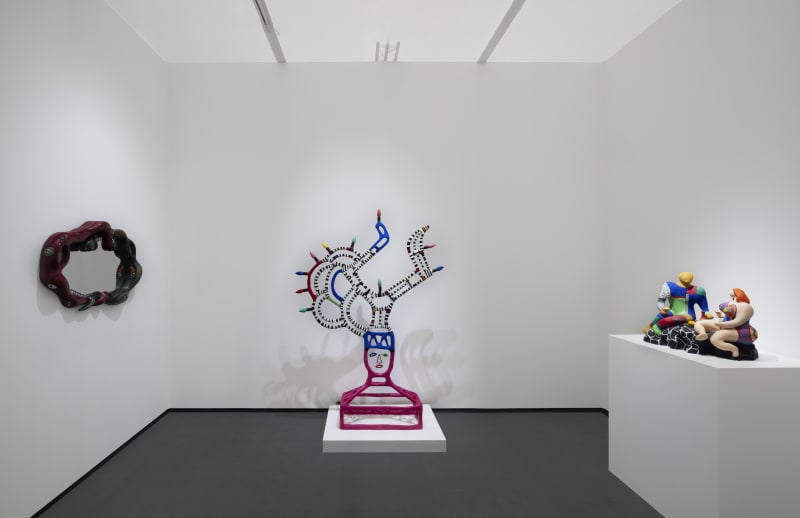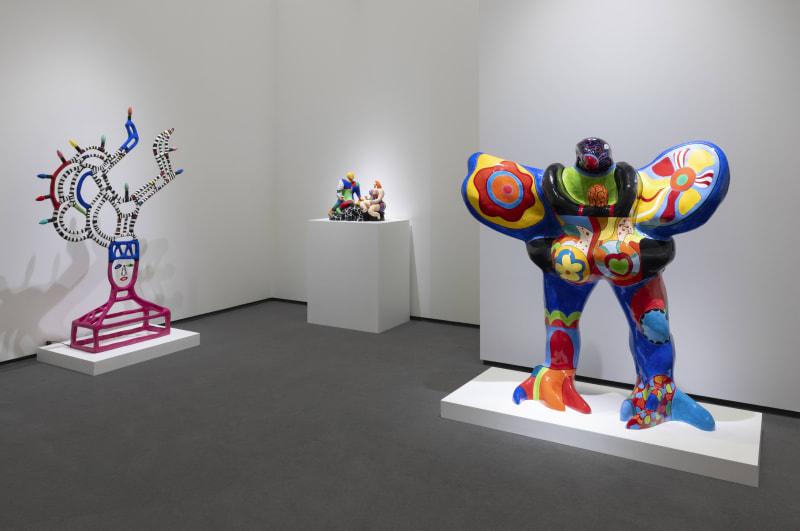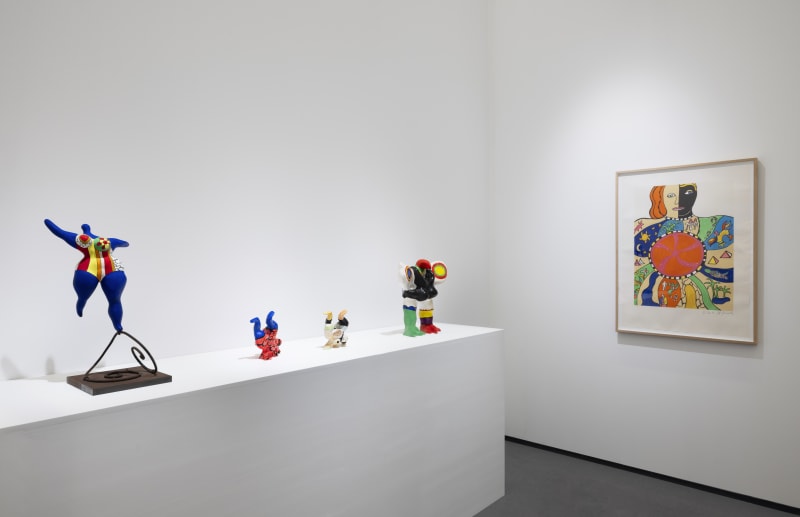For its first ever participation in Frieze Seoul, Galerie Mitterrand is pleased to present a historical solo show of works by Niki de Saint Phalle, focusing on the artist’s sculptural oeuvre from the 1960s to the 1990s.
This selection takes us back to the origins of de Saint Phalle’s work namely with a red Nana Fontaine Type from 1967, a Nana Moyenne danseuse from 1967-68 and two Nanas upside down from 1968. Iconic in the artist’s work, these imposing, corpulent figures which the Niki warmly referred to as “Nanas” are a testimony to her naive yet insightful aesthetics. Through these works the artist is associated with the second wave of feminism of the late 60s.
Two other works, Adam & Eve (1985) and Oiseau Amoureux (1972-1992) relate to Niki de Saint Phalle’s monumental sculptures. Adam & Eve is the small version of Le Choix, one of the twenty-two colossal figures in Niki’s Tarot Garden in Tuscany. Le Choix (the Choice) represents the lovers in tarot cards and refers to the first couple in western civilization who had to make a choice. According to the artist, the title was meant to remind us that whether we make a good or a bad choice, we will always learn from our mistakes. The Oiseau Amoureux is the smaller version of the Oiseau Amoureux Fontaine. A major public fountain representing a Nana embracing a bird-of-paradise, it was installed in Duisburg, Germany in 1993.
Finally, Ganesh II is one of Niki de Saint Phalle’s dynamic Tableux Éclatés (“burst paintings”). These vibrant mechanized pictures depicting landscapes upon which animals and still lifes, as well as her trademark Nanas, dance across beaches, deserts, and seas, are animated through an intricate motorized armature activated through a photo sensor: when the artwork recognizes a viewer, internal motors trigger motion of the work’s disparate elements or illuminate the scene with brilliant electric bulbs.
After the death of her husband, Swiss artist Jean Tinguely, in 1991, de Saint Phalle searched for answers about life after death across religions. She was taken by the story of the Hindu deity Ganesh, who lived after decapitation and came to represent rebirth in the face of hardship.
Other important works complete this presentation which comes forth as a retrospective of the artist’s most daring and astonishing works.







